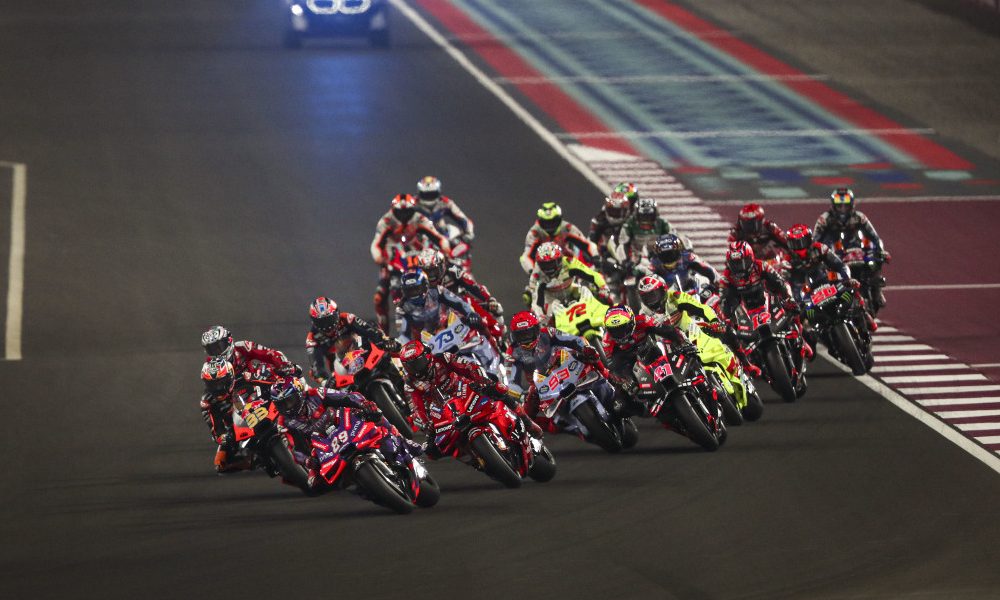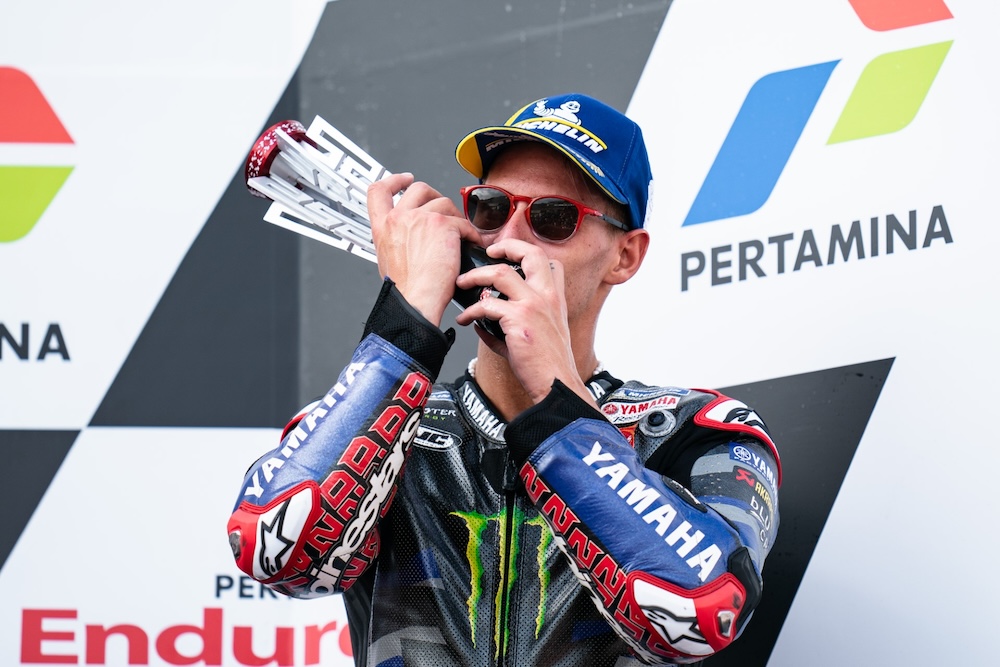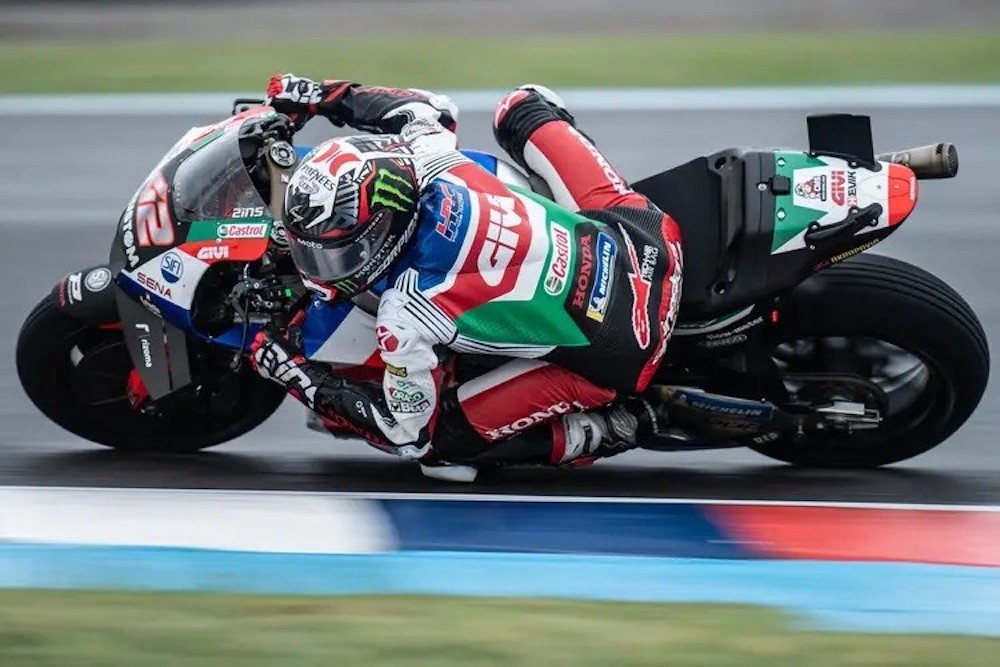This weekend, MotoGP visits a treasure tucked among the Florentine hills of Italy. The Autodromo Internazionale del Mugello is a marquee stop not only for the raucous atmosphere, but also because it is regularly the scene of the fastest top speed of the season. The current record is held by Pramac Ducati rider Jorge Martin at an astonishing 363.6 km/h (224.4mph) reached along the front straight. From that remarkable speed, riders are then forced to slow for the second-gear Turn 1 with a target apex speed of 95 km/h (58.6mph).
According to data from MotoGP brake supplier Brembo, it takes around five seconds and 276 meters (911 feet) to scrub off all that speed. Riders will apply around 11 pounds of load to the brake lever and experience over 1.5g during the deceleration.
In a recent story, we took a deep dive into the tech Brembo employs along with some of the science behind what it takes for MotoGP riders to rein in these two wheel rocketships. Now, courtesy of Red Bull KTM rider and multi-MotoGP winner Jack Miller we learn what it’s like from the rider’s perspective.
Miller himself is level with five other riders on the fourth-fastest ever MotoGP top speed at 221.5mph, also recorded at Mugello.
When it comes to braking, styles and techniques can vary widely among the field of MotoGP riders. Conditions including the prevailing wind direction and speed as well as track temperature and moisture factor heavily in as well. It all begins when deciding to roll off the throttle and pull the brake lever at his right hand.

“Nowadays, I generally have all the braking points embedded in my memory,” says Miller. “As soon as I feel like I’m in the target spot, I throw myself up (from his tucked position) and in that same motion I want to be as seamless as possible between throttle and brake.
“At that point I want to slam the front brake as hard as possible to get an initial pitch forcing the front of the bike down, getting the tire to bite, but at the same time I want to keep the rear tire on the ground as much as possible, even if just to the micro-millimeter. At this point I’m playing with the feeling I’m getting through the handlebars and seat trying to understand how much lock I’m getting on the front tire. Depending on the feedback, I’m playing with the brake lever to get some control over how much lock-up I’m getting. So, if you look at my brake trace the line shoots up immediately and then I’ll get a series of small spikes. Other riders who don’t mind some lock-up will have a flatter line across the top of their brake trace.”
In this part of the sequence, Miller is still mostly traveling in a straight line and only engaging the front brake. He’s also using his left foot to click down the gears to prepare for his corner exit while also taking advantage of some engine braking. His upper body and possibly an outboard thrown leg are also acting like an airspeed brake.
It’s at this point that many riders’ own techniques and style start to come more into play.
One big point of differentiation is both the setup and use of the rear brake, which unlike a car operate fully independently of one another. Some riders have been known to almost never use the rear brake, but today the consensus is that most use it to balance and rotate the bike into the corner, a technique that has become more important with the increased aerodynamics and electronics on current MotoGP bikes.
The standard setup is to have rear brake lever on the right foot peg, but many riders also opt for a thumb lever on either the right or left handlebar. According to Brembo engineers, the use of the thumb lever negates the foot lever, meaning that only one of the two levers works at any given time.

Another evolution within the last 10 or so years has been the technique of throwing out a leg like a canoe outrigger as they approach the turn-in point. For left-hand turns the left leg goes out and for right-hand turns the right leg. Some riders might opt to use the thumb brake for right-hand corners while stickling with the foot lever for left-handers. Miller doesn’t utilize the thumb lever, sticking to the foot lever regardless of corner direction.
“As soon as the center of gravity starts to come down as you’re leaning into the corner, you can start to ask a bit more of the front brake,” says Miller. If he is using his leg for a counterbalance, he’ll now tuck it back into the foot peg and can start applying the rear brake.
“Now I’ll start applying quite a lot of rear brake to get the bike to squat into the track surface and I’m trying use the rear brake to create some slip so the rear tire slides more,” adds Miller while explaining that in his case he doesn’t differ his technique be it for a right- or left-hand corner.
Miller also states that no two deceleration events are ever the same. Each one requires a degree of finesse and fine tuning to get just the right apex speed.
Beyond the direct technique of brake application, MotoGP riders must engage every part of their body to control the bike through the braking phase.
“With most of brake force happening in front most of the bike’s mass, it really wants to lift the rear or step out to the side, so I’m using my core strength to keep it all under control,” he explains. “My knees are often locking to the (fuel) tank and my arms are locking out and as the turn in approaches, I’m using my outside arm to get my body out of the bike and initiate the lean into the corner. It’s a lot of force going through my arms and legs at this point because the bike is essentially trying to throw me off.”
Miller sums up that the challenge of braking in MotoGP centers on the smallest margins of error. With lean angles up to 60 degrees or more, riders are braking and balancing the bike simultaneously on contact patches that are smaller than the size of a credit card. A miscalculation in the braking input is more than likely to lead to a fall rather than overshooting a corner and rolling into the runoff area. It’s a fine line between speed and disaster.






